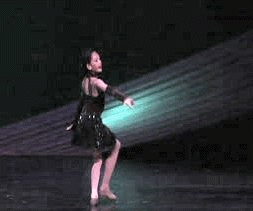 | ||
An acrobatic flip is a sequence of body movements in which a person leaps into the air and then rotates one or more times while airborne. Acrobatic flips are performed in acro dance, free running, gymnastics, cheerleading and various other activities. This is in contrast to freestyle BMX, in which a person revolves in the air about a bicycle.
Contents
Acrobatic flips can be started from a stationary, standing position and they are also commonly executed immediately following another rotational move, such as a roundoff or handspring, so as to take advantage of the angular momentum developed in the preceding move. In general, the hands do not touch the floor during execution of a flip and performers typically strive to land on the feet in an upright position.
Classification
Many variations of flips exist, with usage depending on the particular type of activity. In gymnastics, for example, flips conform to a small number of specific, rigorously defined forms and movements. In activities such as free running and tricking, however, there are seemingly endless variations of flips, though many of these are variations of the fundamental gymnastics flips. As a result, gymnastics nomenclature is often applied to flips found in other disciplines. In many cases, flips are generally categorized according to the direction of body rotation. For example, the body rotates in the forward direction (i.e., face first) in a front flip and in the opposite direction in a back flip.
Gymnastics
Gymnastics flips are performed in both men's and women's gymnastics, on various apparatus including the balance beam, vault, and floor. In all cases, gymnastics flips require the hips to pass over the head. Four body forms are commonly employed in gymnastics flips:
Many gymnastics flips are descriptively named, based on the direction of rotation and the body position that is assumed during execution. For example, a front flip performed with a tucked body form is called a front tuck. When initiated from a stationary, standing position, a front tuck is called a standing front tuck.
Common modifications
These modifications are applicable to many types of flips:
Tucks
Layouts
Tricking and b-boying
A virtually unlimited number of flip variants has been spawned within various activities, many having proprietary nomenclature.
